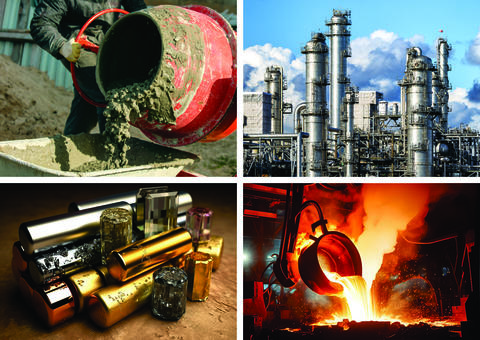Summary
All industrial sectors rely on elemental analysis and physical properties testing to confirm product compliance with manufacturing specifications. Support of product compliance testing has long been a core activity in the Chemical Sciences Division in collaboration with industry associations and standards developing organizations (SDOs). For years, the Chemical Sciences Division has invested in development of standard test methods for industrial commodities and in SRM development to validate those methods and to establish traceability to the International System of Units (SI). These efforts are aligned with industry needs through interaction with SDOs, industry associations, expert private sector laboratories, and commercial reference materials producers.
Description

In the arena of industrial commodities, the primary challenges are to provide measurement tools and reference materials that allow U.S. industry to establish comparability of measurement results to results obtained by customers, competitors, and regulators for the basic chemical properties of products, intermediates, and by-products on a worldwide basis. All members of a given industrial supply chain benefit from critically evaluated standard test methods validated using trusted reference materials. The private sector can leverage NIST reference materials for key commodities by creating their own reference materials targeted at products having more specialized compositions and applications.
The goals of this program are to:
- Increase the availability of reference materials (both NIST and private sector) for basic industrial commodities including metals, ores, cement, polymers, glass, and more
- Collaborate with the private sector through standards development organizations and industry associations
- Make use of multiple methods of analysis at NIST and collaborating laboratories
- Contribute to development of new and improved standard methods of test.
Major Accomplishments
In the past several years, the following SRMs have been developed or renewed in collaboration with industry:
- Completed new and renewal SRMs for steel, Portland cement, polyethylene, silicon metal, zirconium, and copper mine tailings,
- Participated in development of international standard test methods for elements in titanium and plastics and compounds in cement,
- Upgraded existing SRM certificates to comply with ISO Guide 31 for more than 20 ferrous alloys, nonferrous alloys, and geological materials,
- Initiated SRM development projects for free-cutting brass, lead-free solder, molybdenum concentrates, silicon carbide, copper ore, refined copper, and feldspar.
DOCUMENTARY STANDARDS
The following industry standard methods of test were developed and approved with significant contributions by NIST.
- ASTM International E135-08b Standard Terminology Relating to Analytical Chemistry for Metals, Ores, and Related Materials
- ASTM International E539-07 Standard Test Method for X-Ray Fluorescence Spectrometric Analysis of 6Al-4V Titanium Alloy
- ASTM International E1361-02(2007) Standard Guide for Correction of Interelement Effects in X-Ray Spectrometric Analysis
- ASTM International E2465-06 Standard Test Method for Analysis of Ni-Base Alloys by X-Ray Fluorescence Spectrometry
- ASTM International F2617-08 Standard Test Method for Identification and Quantification of Chromium, Bromine, Cadmium, Mercury, and Lead in Polymeric Material Using Energy Dispersive X-Ray Spectrometry
- ASTM International E2626-08 Standard Guide for Spectrometric Analysis of Reactive and Refractory Metals
- ASTM International E2857-11 Standard Guide for Validating Analytical Methods
- ASTM International E2972-15 Standard Guide for Production, Testing and Value Assignment of In-house Reference Materials for Metals, Ores and Other Related Products
Additional Technical Details
This program is comprised of a number of collaborations between NIST and industry sectors. Design of materials for new SRMs is accomplished in cooperation with materials and analysis experts from industry. Specifications for composition, homogeneity, and quantity are based on current and projected industry needs. Value assignment projects are designed to include high-performance analytical methods at NIST, state-of-the-art laboratory methods in industry, and classical chemistry methods where available and appropriate.
In addition, NIST is actively building relationships among manufacturers, their customers, and accreditation bodies. Through presentations at technical meetings and workshops at NIST and accrediting body events, NIST and our partners are working to educate everyone at the intersection of chemical metrology, quality system accreditation, manufacturing specifications, and regulations.

